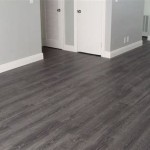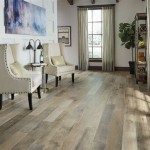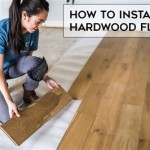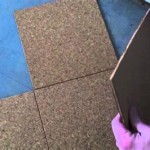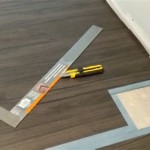Temporary Patio Flooring Options for Grass Surfaces
Creating a temporary patio space on a grass surface can transform an outdoor area for events, gatherings, or simply to enhance usability. Selecting the appropriate temporary flooring is crucial to protect the underlying grass, provide a stable surface, and achieve the desired aesthetic. This article explores various temporary patio flooring options suitable for grass, taking into consideration factors such as material, installation, durability, and cost-effectiveness.
The primary challenge when placing flooring on grass is preventing damage to the turf. Foot traffic and the weight of furniture can compact the soil, restrict airflow, and block sunlight, leading to yellowing or even death of the grass. Proper temporary flooring solutions aim to minimize these negative impacts, allowing the grass to recover after the flooring is removed.
Considerations Before Installation
Before selecting and installing temporary patio flooring on grass, several factors should be taken into account to ensure a successful and sustainable outcome. These considerations will inform the choice of materials and installation methods.
Grass Type and Health: The type of grass present and its overall health are paramount. Delicate grass varieties will require more protective measures than hardy species. Assess the grass's current condition. Is it already stressed from drought, disease, or heavy use? Implementing temporary flooring on unhealthy grass will only exacerbate the problem. Consider aerating and fertilizing the grass a few weeks prior to installation to promote resilience.
Duration of Use: The length of time the temporary patio will be in place is a critical factor. For short-term events, such as a weekend party, less robust solutions may suffice. However, for installations lasting several weeks or months, more durable and breathable materials are essential to protect the grass. Extended periods under flooring can create a microclimate conducive to mold and mildew growth, so proper ventilation is key.
Intended Use and Weight Load: The intended use of the temporary patio will dictate the required load-bearing capacity of the flooring. Will it primarily be used for foot traffic, or will it support heavy furniture, equipment, or even a dance floor? Different flooring options have varying load capacities, and selecting one that is insufficient can lead to damage to the flooring and potential harm to users. Consider the static and dynamic loads the flooring will need to withstand.
Drainage and Water Permeability: Proper drainage is crucial to prevent water accumulation beneath the flooring, which can damage both the flooring and the grass. Select materials that allow water to permeate through or have built-in drainage channels. Consider the local climate and typical rainfall patterns. In areas with frequent or heavy rainfall, prioritize flooring options with excellent drainage capabilities. Inadequate drainage can lead to waterlogged soil, promoting fungal growth and root rot in the grass.
Budget: The budget allocated for the temporary patio flooring will significantly influence the available options. Some materials, such as interlocking plastic tiles, are relatively inexpensive, while others, like composite decking tiles, can be considerably more costly. Factor in not only the cost of the materials but also the cost of installation, any necessary site preparation, and potential removal and storage expenses.
Installation Complexity: Assess the complexity of the installation process. Some flooring options, such as interlocking tiles or artificial grass, are relatively easy to install DIY, while others, like poured concrete pads, require professional installation. Consider your own skills and resources, and factor in the cost of hiring a professional if necessary. Improper installation can compromise the stability and longevity of the flooring, as well as potentially damage the underlying grass.
Popular Temporary Patio Flooring Options
Several temporary patio flooring options are available, each with its own set of advantages and disadvantages. The selection process hinges on balancing cost, functionality, aesthetics, and the need to protect the grass.
Interlocking Plastic Tiles: Interlocking plastic tiles are a popular choice for temporary patios due to their ease of installation, affordability, and durability. These tiles typically feature a perforated design that allows for drainage and airflow, helping to prevent damage to the grass. They are available in a variety of colors and textures, offering some degree of customization. However, the plastic material can become hot in direct sunlight, and the tiles may not be suitable for supporting very heavy loads. The interlocking mechanism can sometimes be prone to dislodging, especially on uneven ground.
Outdoor Carpeting or Rugs: Outdoor carpets and rugs provide a soft and comfortable surface for temporary patios. They are available in a wide range of styles, colors, and materials, allowing for a high degree of aesthetic customization. However, outdoor carpets and rugs can trap moisture, leading to mold and mildew growth if not properly maintained. It is essential to select materials that are specifically designed for outdoor use and that are resistant to water damage. Regularly cleaning and drying the carpet or rug is crucial to prevent the build-up of debris and moisture. The grass underneath may become compacted and discolored if the carpet or rug blocks sunlight and airflow for extended periods.
Pallet Platforms: Pallets can be repurposed to create a rustic and cost-effective temporary patio. They can be arranged and secured together to form a stable platform. However, pallets can be rough and splintered, requiring some level of preparation before use, such as sanding and sealing. They can also be susceptible to rot and decay if not treated properly. Ensure that the pallets are clean and free of pests before installing them on the grass. A layer of landscaping fabric or plastic sheeting can be placed between the pallets and the grass to provide a barrier and prevent the grass from growing through the gaps. Pallet platforms may not be suitable for uneven terrain.
Gravel or Crushed Stone: Gravel or crushed stone can provide a durable and well-draining surface for a temporary patio. It is a relatively inexpensive option, and it allows for good airflow to the grass. However, gravel or crushed stone can be uncomfortable to walk on barefoot, and it may require a border to prevent it from spreading. A layer of landscaping fabric should be placed beneath the gravel or crushed stone to prevent weeds from growing through and to separate the gravel from the soil. The weight of the gravel or stone can compact the soil, potentially damaging the grass in the long term. It can also be difficult to remove completely once installed.
Composite Decking Tiles: Composite decking tiles offer a more upscale and durable option for temporary patio flooring. They are made from a blend of wood fibers and plastic, providing a natural wood look with enhanced resistance to moisture, rot, and insects. Composite decking tiles are typically installed using an interlocking system, making them relatively easy to install and remove. They are available in a variety of colors and styles. However, they are generally more expensive than other temporary flooring options. Ensure that the tiles are properly supported to prevent sagging or bending.
Artificial Grass: Artificial grass can provide a low-maintenance and aesthetically pleasing surface for a temporary patio. It is available in a variety of textures and colors, mimicking the look and feel of natural grass. Artificial grass is relatively easy to install and remove, and it does not require watering or mowing. However, artificial grass can become hot in direct sunlight, and it does not provide the same level of drainage as other options. It can also be more expensive than other temporary flooring materials. The underlying grass will be completely blocked from sunlight and airflow, potentially leading to its deterioration. To minimize this impact, choose a high-quality artificial grass with good drainage and consider aerating the area underneath after removal.
Installation and Maintenance Best Practices
Proper installation and maintenance are crucial for maximizing the lifespan of the temporary patio flooring and minimizing damage to the underlying grass. Neglecting these aspects can lead to premature deterioration of the flooring and severe harm to the grass.
Site Preparation: Before installing any temporary patio flooring, prepare the site by removing any debris, rocks, or other obstructions. Level the ground as much as possible to ensure a stable and even surface. If necessary, fill in any low spots with soil or sand. Consider aerating the grass to improve drainage and airflow. A layer of landscaping fabric can be placed between the flooring and the grass to provide a barrier and prevent weeds from growing through. Ensure that the fabric is properly secured to prevent it from shifting or bunching up.
Proper Installation Techniques: Follow the manufacturer's instructions for installing the chosen flooring option. Ensure that all pieces are properly connected and secured. For interlocking tiles, make sure that the connections are tight and secure. For pallet platforms, use screws or nails to fasten the pallets together. For gravel or crushed stone, create a border to contain the material and prevent it from spreading. For artificial grass, properly secure the edges to prevent it from lifting or curling.
Regular Cleaning and Maintenance: Regularly clean the temporary patio flooring to remove dirt, debris, and spills. Use a broom, vacuum, or hose to clean the surface. For stubborn stains, use a mild soap and water solution. Avoid using harsh chemicals or abrasive cleaners, as they can damage the flooring. Inspect the flooring regularly for any signs of damage or wear. Repair or replace any damaged pieces as soon as possible to prevent further deterioration. For outdoor carpets and rugs, regularly vacuum or shake them to remove dirt and debris. Clean them with a mild soap and water solution as needed. Allow them to dry completely before placing them back on the grass.
Watering and Aeration: Even with temporary patio flooring, it is important to water the grass regularly, especially during dry periods. Water the grass early in the morning to allow it to dry thoroughly before the sun sets. Avoid overwatering, as this can lead to waterlogged soil and fungal growth. Periodically aerate the grass to improve drainage and airflow. This can be done using a core aerator or a spike aerator. Aeration helps to relieve soil compaction and allows the grass roots to breathe.
Removal and Storage: When the temporary patio is no longer needed, carefully remove the flooring and store it properly. Clean the flooring thoroughly before storing it to prevent the build-up of dirt and debris. Store the flooring in a dry and well-ventilated area to prevent mold and mildew growth. Inspect the underlying grass for any signs of damage. Aerate and fertilize the grass as needed to promote recovery. Allow the grass to fully recover before placing any heavy objects or furniture on it.

Outdoor Flooring Over Grass Or Dirt Interlocking Tiles

Rubber Foam Artificial Turf Deck Tiles Buyers Guide Installation

Outdoor Flooring Over Grass Or Dirt Interlocking Tiles

Outdoor Flooring Over Grass Or Dirt Interlocking Tiles

Interlocking Patio Tiles Over Grass 7 Facts You Must Know Floor Ideas Easy

Outdoor Flooring Over Grass Or Dirt Interlocking Tiles

Portable Outdoor Floor Tile Temporary Tent Or Event Flooring

Outdoor Flooring Options For Style And Comfort 10 Ideas 2024

Outdoor Flooring Options For Style And Comfort 10 Ideas 2024

Best Ing Deck Plastic Temporary Event Flooring For Grass Protection And Pathway Creating Platforms China Portable Floor Made In Com
Related Posts



